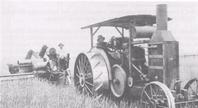


Chapter 1
I Groping In A Strange Environment: 1788-1851
II Farmers Take The Initiative: 1851-1888
III Enter Education And Science: 1888-1927
IV Agricultural Science Pays Dividends: 1927-1987
V Examples Of Research And Development 1928-1988
VI International Aspects Of Agricultural Research
VII Future Prospects
VIII Acknowledgements
References
Index
Search
Help
Contact us

The successful development of Australian agriculture, in its various forms and across a wide range of climatic zones and environmental conditions, has attracted widespread interest internationally. Some examples are the systems which have been evolved for the dryland farming of sheep and wheat, the establishment and maintenance of tropical pastures and leguminous forages, the management of grazing animals in the pastoral zone, and the development and use of improved, clover-based pastures in rainfed and irrigated areas of temperate Australia; these have been cited as models which might be used in the agricultural development of similar ecological zones in Africa, South America and Asia.
When considering the extent to which farming systems can be transferred to other countries, however, it is important to bear in mind their social and economic as well as their technological features. The characteristics which combined to ensure the success of Australian farming systems included the following:
- the existence of a relatively prosperous, literate and educated farming community
with strong traditional links with British and European agriculture and a well
organized political influence; - the support of a variety of national fiscal, taxation, drought relief and credit meas
ures made possible by the economic growth of urbanized and industrial Australia
and her wealth of minerals and energy; - an appropriate system of land tenure;
the development of an effective network of rail, road, air and electronic communi
cations throughout Australia's sparsely populated rural areas; - the formation of an effective network of educational, research, extension, market
ing and commercial services to meet the needs of the farming community; - the recruitment from overseas, as immigrants, of many well-trained and experienced
agricultural and veterinary scientists; - and a mixed and stable community comparatively free from serious disruption
caused by political, religious, ethnic or economic differences .



Because no other developing country shares all these characteristics with Australia, together with similar climates, soils, vegetation and ecological conditions, it follows that farming systems developed specifically for Australia are unlikely to be suited to the needs of others. Nevertheless, many of the specialist and technological aspects of Australian farming systems are readily transferable and some of the supporting policies, attitudes and infrastructures of proven value in Australia may also have wider application.
For these reasons Australian agricultural scientists have often been recruited to those international organizations (e.g. the Food and Agricultural Organization of the United Nations, the International Bank for Reconstruction and Development, and the United Nations Development Program) which are involved in world agricultural development.
 |
Australian Academy of Technological Sciences and Engineering |  |
© 1988 Print Edition pages 58 - 60, Online Edition 2000
Published by Australian Science and Technology Heritage Centre, using the Web Academic Resource Publisher
http://www.austehc.unimelb.edu.au/tia/061.html